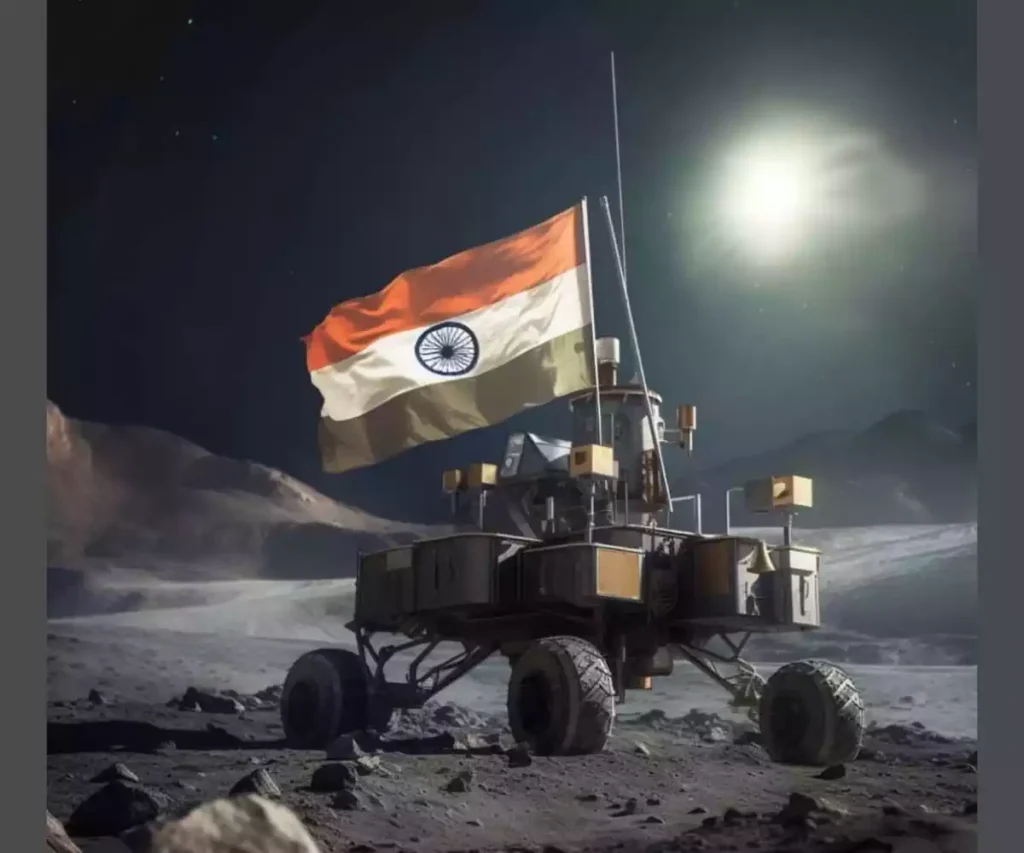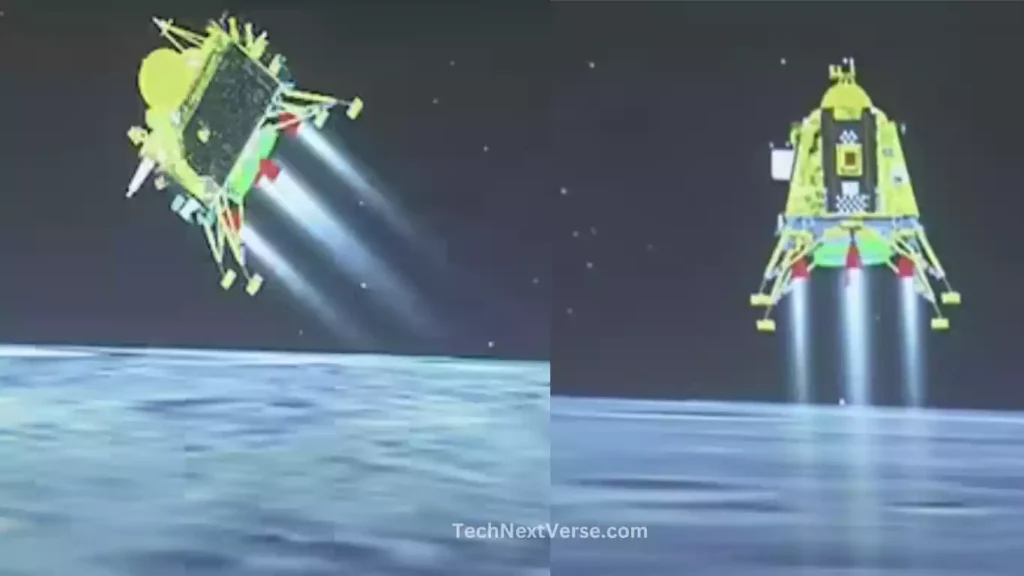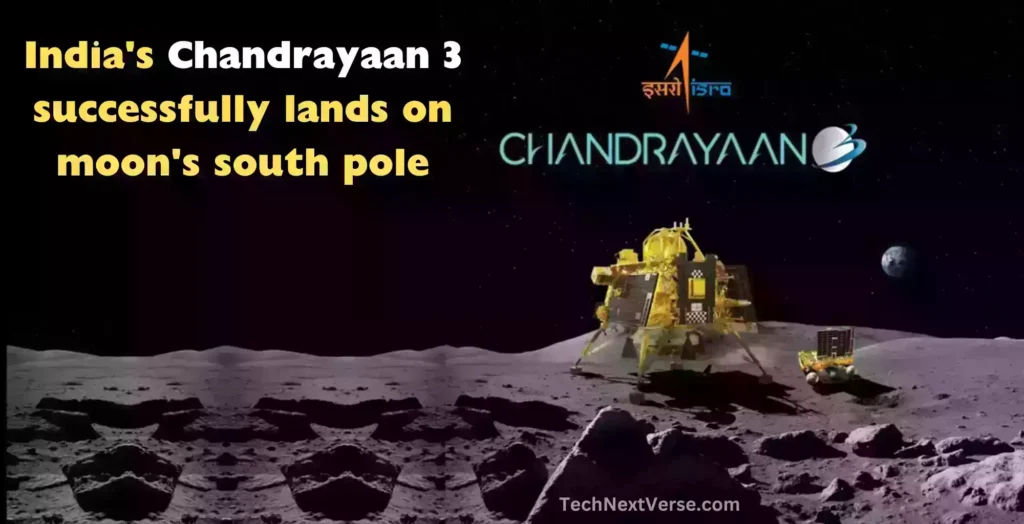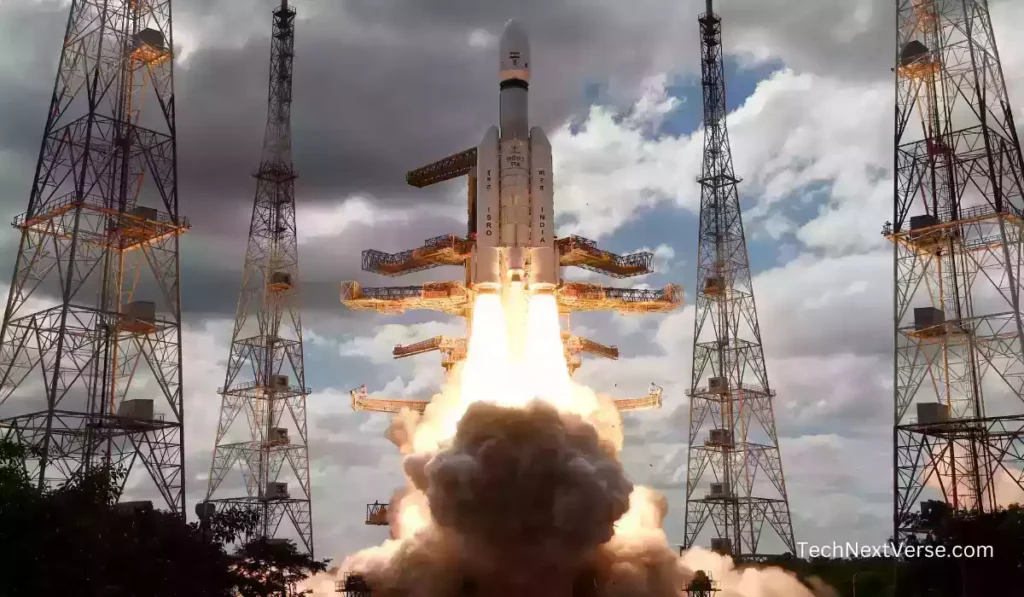In a historic first for the Indian Space Research Organisation (ISRO), India’s Chandrayaan-3 successfully lands on the Moon’s south pole region today. The landmark event marks India’s first-ever soft landing on the Moon, and establishes the country as only the fourth to achieve the feat after the United States, Russia, and China.

The Chandrayaan-3 mission lifted off from Sriharikota last month aboard India’s Geosynchronous Satellite Launch Vehicle Mark III (GSLV Mk III) rocket. After reaching lunar orbit, the lander separated from the orbiter and began its descent to the predetermined landing site near the Moon’s south pole region. ISRO engineers held their breath as the lander fired its thrusters to brake for landing, remembering the heartbreak of 2019 when the Chandrayaan-2 crash-landed.
” This is a giant leap for India’s space program, The successful Chandrayaan-3 landing proves India’s technological capabilities in space exploration. This will pave the way for future Indian missions to the Moon and beyond. “
— said ISRO Chairperson Dr. K. Sivan in a televised address.
Chandrayaan-3 carries several scientific instruments to study the lunar surface, including a seismometer, a thermal probe, a mapping camera, and a rover to analyze the lunar soil. The rover will soon roll out from the lander to begin conducting experiments and collecting data that will provide valuable insights about the Moon’s composition and formation.
Read More : Chandrayaan-3: India’s Next Mission to Advance Lunar Exploration 🌙: India’s Chandrayaan-3 successfully lands on the Moon’s south pole

As congratulations pour in from world leaders, India’s chandrayaan3 spacecraft’s historic landing further increases India’s reputation as a rising space power. It opens up new opportunities for scientific discovery and future human spaceflight missions by ISRO. The Moon landing caps a storied ‘Year of the Solar System’ for India in 2023, after it also put a spacecraft into orbit around Mars earlier this year.
Significance :
- The historic landing paves the way for the rollout of a rover to study lunar soil and topography. This will provide insights on the Moon’s composition and formation.
- Chandrayaan-3’s success cements India’s place among an elite group of countries comprising the US, Russia and China to have achieved soft lunar landings.
- It highlights India’s technological capabilities in space exploration and discovery.
Read Also :
Conclusion :
Chandrayaan-3’s soft landing on the Moon is a proud milestone for India’s space program. As the country’s first controlled lunar landing, it signals India’s arrival as a serious space power. The mission promises to unravel key lunar mysteries and pave the path for future Indian voyages into deep space.
FAQs :
Q: Which space agency is behind Chandrayaan-3 ?
A: The Indian Space Research Organisation (ISRO).
Q: Does Chandrayaan-3 landed on Moon successfully ?
A: Yes , Chandrayaan-3 successfully softly landed on the south pole of the Moon about 6:04 p.m. (IST) on 23 August, 2023.
Q: Is Chandrayaan 2 successfully landed on Moon ?
A: No, Chandrayaan-2 did not successfully land on the Moon. Chandrayaan-2 was India’s second lunar exploration mission launched in 2019. While the orbiter component of Chandrayaan-2 successfully entered lunar orbit, the lander and rover components failed to achieve a soft landing on the lunar surface. While Chandrayaan-2’s orbiter is still operational and collecting data about the Moon
Q: Where did Chandrayaan-3 land on the Moon ?
A: In the south pole region of the Moon.
Q: What will the Pragyan rover do once rolled out ?
A: Analyze lunar soil, study the surface, take images and collect data about the Moon’s composition.
Q: What are the benefits of Chandrayaan-3’s mission ?
A: It will provide new information about the Moon and establish India as a leader in space exploration.
Q. Who is going to moon in Chandrayaan-3 ?
A: After Chandrayaan-3 successfully lands on the moon, then the Pragyan rover will deploy from the lander after landing to analyze lunar samples in-situ. It will not have any humans riding it. ll operations will be controlled remotely from the ISRO Telemetry, Tracking and Command Network (ISTRAC) in Bengaluru.




